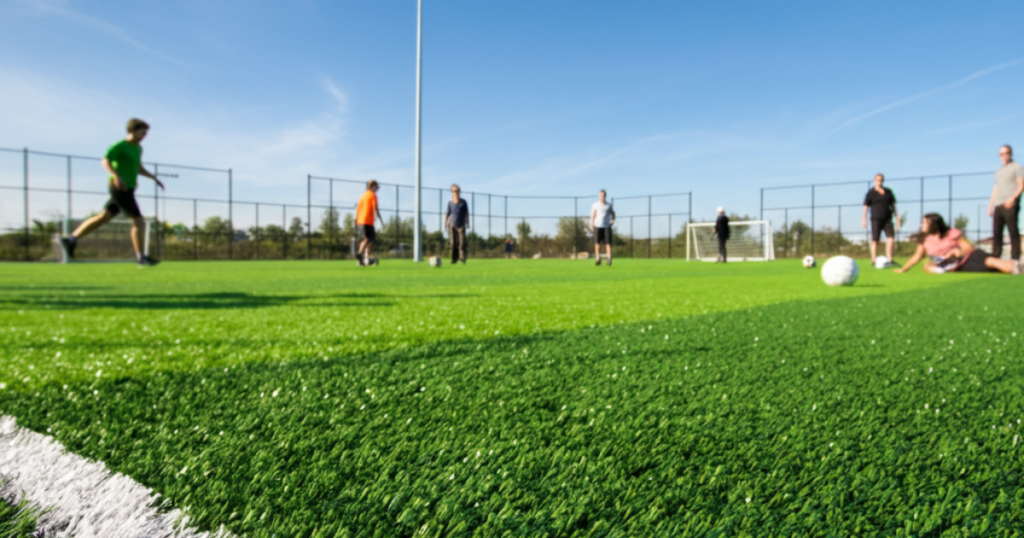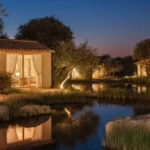When it comes to creating functional and visually stunning outdoor spaces, the debate between natural grass and artificial turf is heating up. While natural grass has its charm, maintaining it can be a costly and time-consuming process. Enter Force Turf—an innovative, durable, and environment-friendly solution that combines practicality and beauty.
This blog explores everything you need to know about Force Turf, from its benefits and types to maintenance tips and real-world examples of its success. Whether you’re a sports facility manager, a homeowner, or a landscape architect, this guide will help you decide if Force Turf is the right choice for your needs.
What Is Force Turf and Why Is It Beneficial?
Force Turf is a cutting-edge synthetic grass solution designed to mimic the look and feel of natural grass while delivering superior durability and low maintenance. This high-quality artificial turf is engineered for multiple applications, ranging from sports fields to residential lawns and commercial landscaping.
Key Benefits of Force Turf:
- Low Maintenance: No watering, mowing, or fertilizing required.
- Weather Resistance: Stays lush and green all year long, whether it’s sunny, rainy, or snowy.
- Eco-Friendly: Reduces water consumption and eliminates the need for harmful pesticides or fertilizers.
- Durability: Built to withstand heavy foot traffic and harsh conditions, making it ideal for high-use areas.
- Aesthetically Pleasing: Maintains a picture-perfect lawn appearance without the effort.
Whether you’re managing a football field or upgrading a cozy backyard, Force Turf offers a wide range of benefits that make it a smart and sustainable choice.
Types of Force Turf for Every Application
Force Turf is incredibly versatile, with options tailored to meet the needs of various spaces and functionalities. Here’s a breakdown of the main types available:
1. Sports Turf
Force Turf is a game-changer for sports facilities. Designed with athletes in mind, sports-grade turf provides excellent surface grip, reduces injuries, and supports high-impact activities. Popular uses include:
- Soccer Fields
- Tennis Courts
- Golf Putting Greens
- Cricket Grounds
2. Landscaping Turf
Perfect for residential and commercial landscaping projects, Force Turf offers stunning lawns that stay green and pristine year-round. It’s ideal for:
- Home Lawns
- Office Green Spaces
- Roof Gardens
3. Playground Turf
Safety is paramount when designing spaces for kids. Force Turf playground surfaces are engineered with shock-absorbing materials to minimize injuries during playtime.
4. Custom Solutions
From pet-friendly turfs for dog parks to decorative setups for event spaces, Force Turf offers customization options to suit niche requirements.
Understanding the type of turf that best suits your specific needs ensures that your investment adds maximum value.
Installation Process and Considerations
Getting Force Turf installed may sound complicated, but the process is straightforward when handled by professionals. Here’s what to expect:
Step 1: Site Preparation
The installation team starts by clearing the area of debris, leveling the ground, and ensuring proper drainage.
Step 2: Laying the Base
A solid base layer, typically made from crushed gravel or sand, is laid to create a stable foundation for the turf.
Step 3: Installing the Turf
The Force Turf is precisely cut to shape and tightly secured in place. Seamless edges are glued or nailed down for a flawless finish.
Step 4: Adding the Filler
To maintain the turf’s structure and provide a soft, natural feel, a layer of infill material (such as silica sand or rubber granules) is applied.
Considerations:
- Drainage: Ensure your site has good drainage to prevent water pooling.
- Usage: Choose the right type of turf based on how it will be used (sports, landscaping, etc.).
- Professional Installation: While DIY is an option, professional installers deliver a smoother and longer-lasting finish.
Maintenance Tips for Longevity
One of the biggest advantages of Force Turf is its minimal maintenance requirements. That said, a little care goes a long way in preserving its appearance and functionality.
Routine Cleaning
- Remove debris like leaves and sticks with a leaf blower or brush.
- For spills or stains, clean with mild soap and water.
Brushing
Use a stiff-bristle broom to fluff the turf and keep the blades upright, especially in high-traffic areas.
Weed Control
Although rare, occasional weeds may grow around the edges. Pull them out or use a pet-safe weed killer.
Inspection
Periodically check for loose edges or worn spots, and address them promptly to prevent damage.
By following these simple maintenance steps, your Force Turf can look impeccable for up to 20 years!
Cost Analysis vs. Natural Grass
When considering Force Turf, many wonder if the cost justifies the investment. Here’s a quick comparison of Force Turf vs. natural grass:
|
Expense |
Force Turf |
Natural Grass |
|---|---|---|
|
Upfront Installation Cost |
Higher |
Lower |
|
Annual Watering Costs |
None |
High |
|
Annual Maintenance Costs |
Minimal |
High (mowing, fertilizing, etc.) |
|
Lifespan |
15–20 years |
Requires constant upkeep |
While the upfront installation cost of Force Turf is higher, its long-term savings on water and maintenance make it the more cost-effective option over time.
Real-Life Case Studies of Force Turf Success
Case Study 1: A Soccer Field Renovation
A local soccer club replaced their natural grass field with Force Turf. The result? Lower maintenance costs, fewer cancelled matches due to poor weather, and rave reviews from players about the surface’s performance.
Case Study 2: Residential Landscaping Upgrade
A family in California switched to Force Turf to reduce their water bill. The lush, green backyard they now enjoy requires no mowing and complements their eco-friendly lifestyle.
These examples showcase the versatility and impact Force Turf has across various applications.
Addressing Common Concerns and FAQs
Q1. Is Force Turf safe for children and pets?
Yes! Force Turf is non-toxic and designed with safety in mind. Playground turf, in particular, includes extra padding to reduce injuries.
Q2. Does Force Turf get hot in the sun?
Like most synthetic materials, Force Turf can warm up on sunny days. However, installing heat-resistant turf or adding shade can help mitigate this.
Q3. Can I install Force Turf myself?
While DIY installation is possible, hiring professionals ensures a smoother finish and longer-lasting results.
Q4. How long does Force Turf last?
With proper care, Force Turf can maintain its appearance and functionality for 15–20 years.
Transform Your Space with Force Turf
Whether you’re tired of the hassle of maintaining natural grass or looking to create a professional-grade sports field, Force Turf provides the perfect balance of convenience, durability, and beauty. Its versatility and cost-saving benefits make it a smart investment for residential, recreational, and commercial applications alike.
Curious to learn more about how Force Turf can enhance your space? Contact us today for a free consultation!







